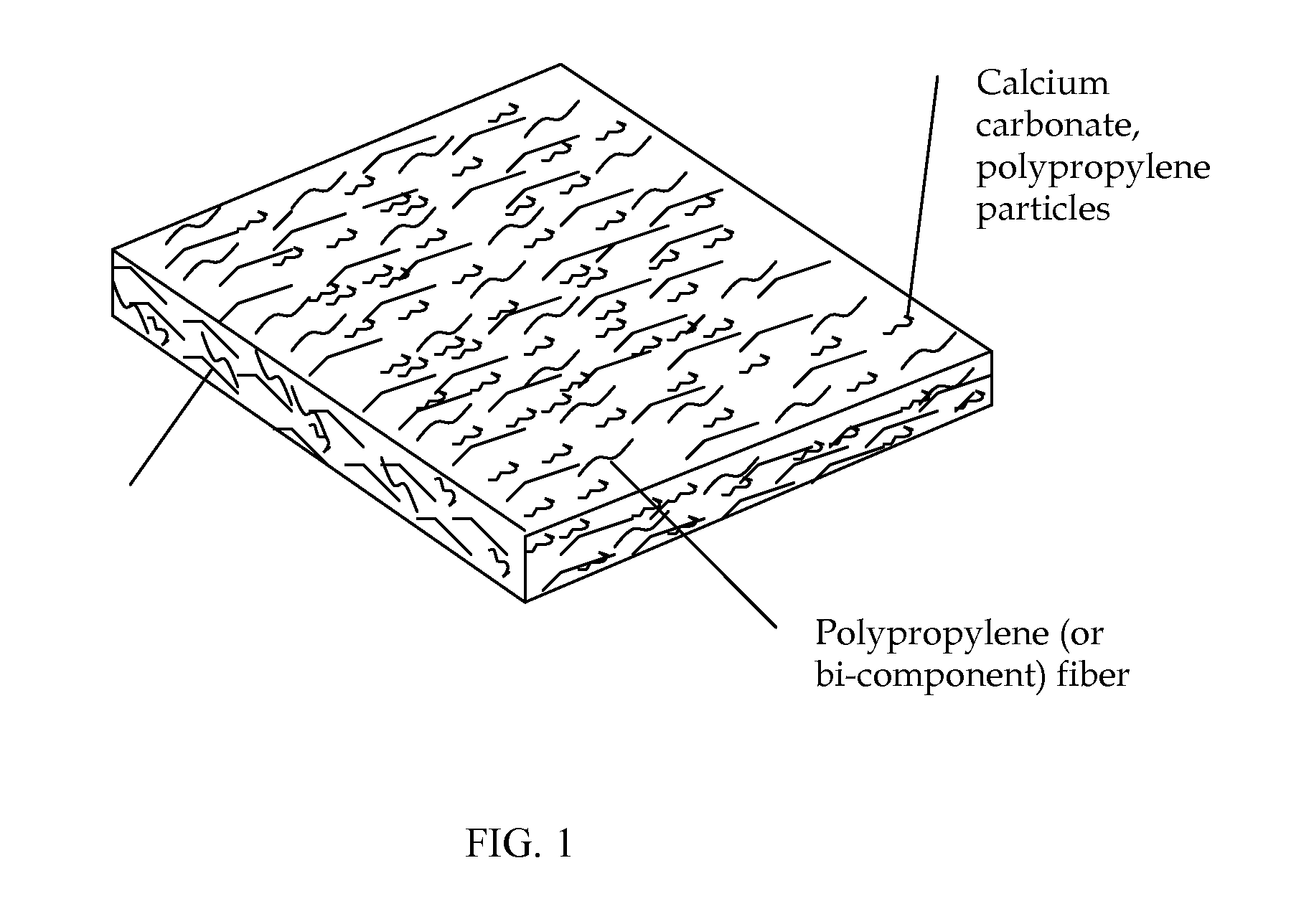Composite Pad of Fiber and Foam and Related Process
a technology of fiber and foam and composite pads, applied in the field of composite resilient pads, can solve the problems of significant waste disposal problems, complicated matter, and the failure of most companies that have attempted to undertake this challenge, and achieve the effects of reducing the cost of the challeng
- Summary
- Abstract
- Description
- Claims
- Application Information
AI Technical Summary
Problems solved by technology
Method used
Image
Examples
Embodiment Construction
[0016]FIG. 1 shows a cushioned and bouncy composite pad using recycled materials which may be manufactured by thermobonding a mixture of shredded carpet material and pieces of foam. Carpet paddings manufactured by this process have resilience, bounciness, strength, and desirable properties for installation in homes and use by consumers, and are cost effective. A composite carpet padding is described which is able to effectively withstand moisture while maintaining springiness and resilience.
[0017]Methods of manufacturing an padding include controlling the ultimate properties of the product and provides for consistency in properties.
[0018]The disclosure includes a composite cushion structure having sixty weight percent to ninety weight percent of liberated synthetic carpet fiber comprising and thermoplastic particles from carpet backing (hardback carpets) obtained and processed from recycled post consumer carpet which are bonded together with approximately five weight percent to twen...
PUM
| Property | Measurement | Unit |
|---|---|---|
| Temperature | aaaaa | aaaaa |
| Length | aaaaa | aaaaa |
| Length | aaaaa | aaaaa |
Abstract
Description
Claims
Application Information
 Login to View More
Login to View More - R&D
- Intellectual Property
- Life Sciences
- Materials
- Tech Scout
- Unparalleled Data Quality
- Higher Quality Content
- 60% Fewer Hallucinations
Browse by: Latest US Patents, China's latest patents, Technical Efficacy Thesaurus, Application Domain, Technology Topic, Popular Technical Reports.
© 2025 PatSnap. All rights reserved.Legal|Privacy policy|Modern Slavery Act Transparency Statement|Sitemap|About US| Contact US: help@patsnap.com


